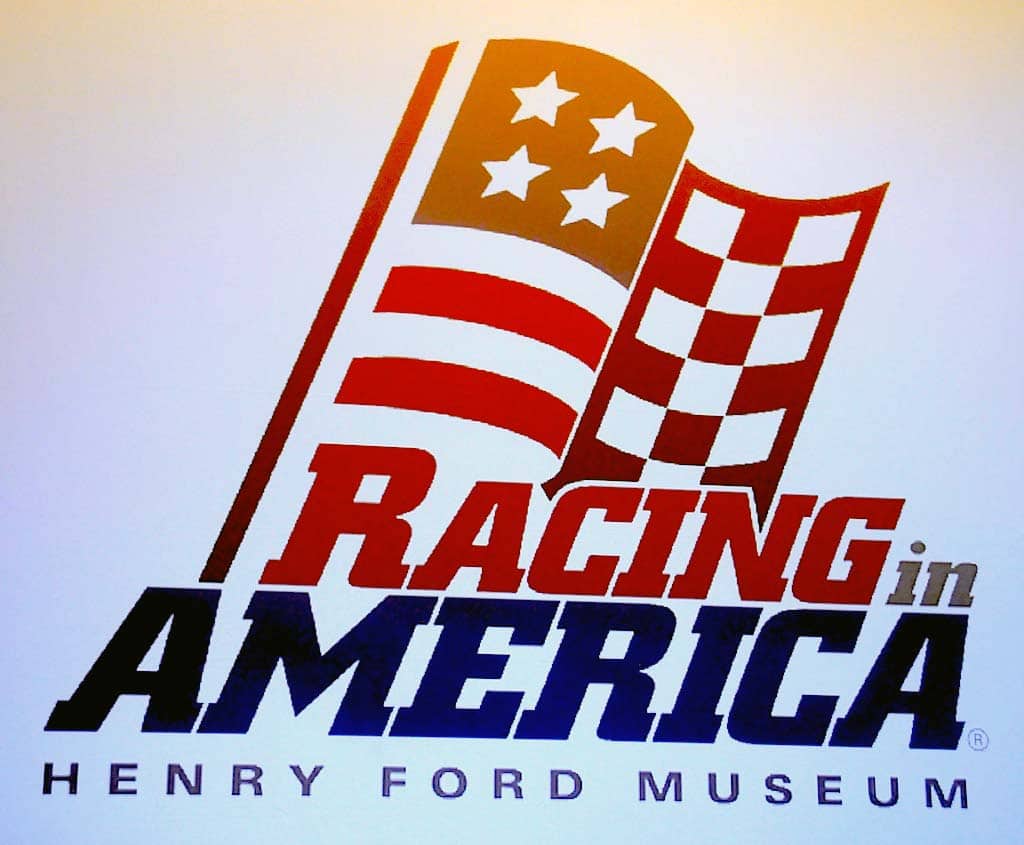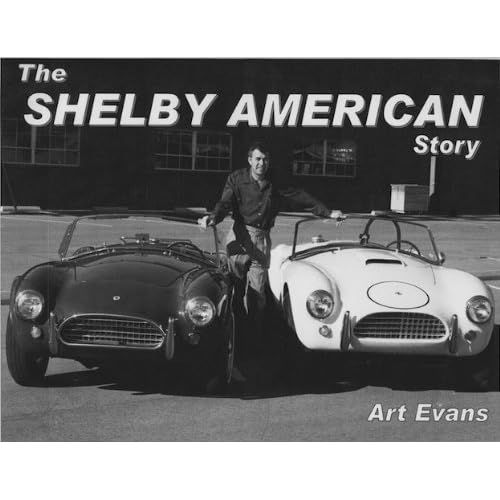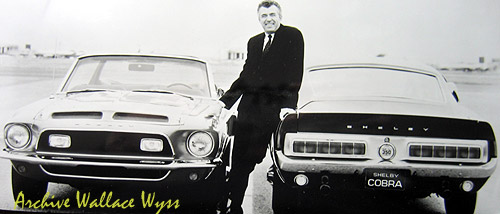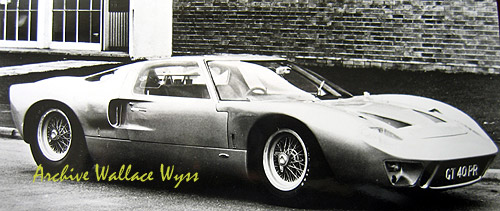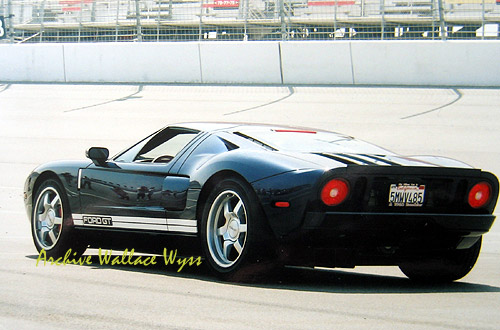 |
| Shelby Mk V aka The Mangusta |
The Shelby Mk. V
Never heard of it? It reached the U.S. market as the Mangusta.
by Wallace A. Wyss
Carroll Shelby was a quick learner. He learned early on that the Cobra, particularly the leaf sprung Cobra descended from the 1953 A.C. Ace, had peculiar handling. The Cobra chassis was redesigned by Ford for the big block model, but it was never a sophisticated handler; more of a “point and squirt” device.
Once he became involved with the Ford GT40 in 1964, Shelby realized that mid-engined was the way to go. Having the engine between the axis made for a better polar moment of inertia, reducing the time a car takes to respond to turning input.
When the Group 7 cars began to emerge, Shelby wanted to get into it. He had earlier imported some Cooper Monacos, mid-engined cars, from England and had Cobra-ized 289 cast iron V8s installed. These were nicknamed by the press “King Cobras” but were dropped from his racing roster once he became involved with the Ford GT.
ENTER DE TOMASO
Then came Alejandro de Tomaso (from here on, we spell it the American with a capitalized “D”). An Argentine living in Italy, he was infamous for developing one race car after another, often with ingenious ideas but he had a penchant for always going on to the next idea; leaving the last project stillborn with no development.
Around 1962 he did get a mid-engined coupe into production, called the Vallelunga after a racetrack where the prototype in roadster form had some small success. This Ford Cortina-powered car was svelte looking, but handled only marginally, and the power output from a nearly stock engine was far below what it needed to beat Porsches in the same class.
Then in 1965 Shelby had his chief in-house designer, Peter Hall Brock, design a mid-engined car that would be good for the emerging Group 7 class in the U.S. The car had a svelte roadster body, with a mid-mounted V8 and a rear spoiler that finally saw the airfoil that Brock had envisioned for the Cobra Daytona coupe reach fruition. The driver could control the angle of a movable panel in the center of the airfoil so that the amount of download on the rear could be varied.
The car was innovative. Unfortunately the first coachbuilder, Frua, totally screwed up the design, so much so that Brock took the car over to Fantuzzi, who built many a race car, and had a new body designed that was closer to his clay model.
The racing world was awaiting the car and had their appetite whetted when DeTomaso rolled out a mockup of the chassis--a spine frame chassis with the engine connected to central spine, an idea that DeTomaso had reportedly cribbed from a German design of the 1920’s called the Rumpler.
Alas two such mercurial temperaments as DeTomaso and Shelby couldn’t get along for long—each had a penchant to take the limelight and there was room under that limelight for only one at a time. Plus Shelby had promised Ford he would make more Daytona coupes. The first Daytona had a body hand-hammered out in Los Angeles by Bill Honda, but the bodywork for the next batch was farmed out to Italy, to Carrozzeria Gran Sport in Modena. Once Shelby took the money out of the kitty provided by Ford to make more Daytonas he had none left to pay DeTomaso so DeTomaso glommed onto the race car project and finished it out as a Ghia show car called the 70P.
Whether one ever reached a racetrack is debatable. This writer has seen pictures of one being tested and even pictures of it being raced, but was it a real race, or just a gathering of individuals to watch a car being tested? And how many were made is even debated some 40 years later…maybe two…maybe three. Documenting early DeTomaso prototypes is like trying to catch cats, the history is elusive, and there are no fulltime DeTomaso serial number mavens equal to Marcel Massini is in the Ferrari world.
But DeTomaso never quite threw anything away. Here he had the world's attention with the spine frame and the 70P. Then luck came his way. Ghia had done a design for a rival firm, Iso of Bresso, who made Chevy V8-powered cars. Giugiaro had penned a dramatic mid-engine car that could have been the "little brother" of the big Iso Fidia four seater. But Renzo Rivolta, head of Iso, soundly rejected the idea so there was DeTomaso with a beautiful mid-engined car body design and no chassis to put it on. Wait a minute--what about the 70P chassis? Thus came the Mangusta.
THEN CAME THE MANGUSTA
The DeTomaso Mangusta is one of the most beautiful cars ever to come out of Italy. But it does have its problems.
It had a similar frame to the 70P race car but not quite. Around the perimeter of the floor-pan is tubing of quite a modest size. The body was heavy steel (except for the deck lids, which in some cars were aluminum). The car flexed like crazy.
The engine was a 302 in its American form, not the robust 302 that was in the Boss 302 of 1969 but a weak 302 that was reportedly available as a stationary industrial engine. It was a low revver but at least durable if you kept it below 6000 rpm.
The gearbox was a ZF 5-speed trans-axle similar to that in the GT40, ordered up after the disaster in the ’64 season when the Colotti gearboxes packed up whenever they were pushed hard.
One of the main problems of the Mangusta was that the gearbox was put in the same place vis-a-vis the engine as that in the GT40, with the result that it was quite low to the ground. Hit a pothole and you stood a chance of cracking the bell housing which was quite expensive. In the later Pantera. DeTomaso wisely flipped the gearbox around, so that it was a few inches higher off the road which the result less cracked gearbox casings.
The designer of the Mangusta was none other than Giorgetto Giugiaro, then just a very young man with only one other carrozzeria (Bertone) in his resume, but now arguably the most famous car designer in Italy. The car made it from the prototype to production with very few changes, the biggest being the adding of two vents to the rear deck “butterfly” wings in order to vent hot air out of the engine compartment.
Sitting in the Mangusta , one discovers how close the windscreen is to the driver’s head. This writer is 6’1” and grew uncomfortable having the windscreen only 3” from his head. So much for a design that looks good from all angles but forces you to accommodate to something arguably dangerous in order to get those good looks.
Today’s owners of the 400-odd cars (the general consensus was that 400 coupes were made and one roadster prototype ) sometimes defend it by saying the tires of the time were to blame. Others spend the development money DeTomaso should have spent, re-arranging the rear suspension a bit to correct flaws in the original design. Back in the car's original era, Sports Car Graphic did a whole number of trying to correct the car, such as fitting more modern Polyglas 60-series tires, finally concluding that it was tail heavy . Their staff was able to improve it, but it was all for naught, the car was only popular as The Car To Own in Tinseltown for a few months, soon eclipsed by the Lamborghini Miura, also mid-engined but with a high winding V12 engine with a real yowl.
SHELBY’S INVOLVEMENT
Carroll Shelby is nothing if not an entrepreneur. Despite the fact that DeTomaso had been so miffed when Shelby pulled funding on the 70P that he had named the subsequent road car the “mongoose” because in nature that is the natural enemy of the Cobra, Shelby was amenable to helping market it in the U.S.
At an auto show, probably the 1969 New York Show, a yellow Mangusta coupe was displayed along with the production Ford cars and the flier handed out to show-goers referred those interested in the car to Carroll Shelby, as if he were the distributor.
At the time, at least two Ford executive were in love with the car including the then VP in charge of design, Eugene Bordinet. Money was even spent in devising a rubber front bumper similar to that later used on the Ferrari 365GTC/4. That nose would have allowed it to meet the upcoming bumper regulations. The Mangustas that did make it into the U.S. were allowed in under a special law that exempted manufacturers who made less than 500 cars from many regulations, but even those regulations wouldn’t let it in past 1969.
During their brief love affair with the 'Goose, Ford dispatched two designers to Modena to inspect the Mangustas being built at Ghia Carrozzeria but they came back with a negative report. Their conclusion was that the term “production line” in this case was a misnomer--the cars were really hand-built with variations from car to car. Ford, back in Dearborn, had already tired of that way of doing things in the A.C. Cobras. They pulled away from wanting to import the Mangusta. Fortunately for DeTomaso, Kjell Qvale of British Motor Car Distributors in San Francisco took up the cause and imported at least 180 of the total, selling them for around $11,000 each.
This left Shelby out in the cold. He had been temporarily buoyed by Ford showing a Mangusta in an internal design review that had SHELBY Mk.V badges on it. The badges made sense,for, in 1967 Ford had won the 24 Hours of LeMans for the second time with a Ford GT called the Mk. IV.
But in that same design show there was another Ford prototype, the Mach 2C, a car designed by Ford designer Larry Shinoda that would have been all American-made. It was a svelte design, using a V8 larger than a 302, possibly a 400, and possibly fuel injected. It would have used a Borg-Warner gearbox. But that design became a political casualty when Shinoda’s boss, Semon Knudsen, was fired by Henry Ford II.
Ford had hired Bunkie") Knudsen away from GM, where he had spent 29 years , in the hopes he would bring some fresh ideas. But Knudsen had rather too many ideas, even going down to the Styling studio and insisting on changes in the upcoming cars. Henry Ford II summarily fired him after 19 months so all ideas connected to Knudsen were round-filed. When Knudsen left so did his fair-haired boy Shinoda, who Knudsen had brought over from Ford, and who had angered the other designers by reporting only to Knudsen, going around the entire design chain of command. Plus Knudsen had a mortal enemy at Ford—Lee Iacocca—of whom Time magazine quoted some Ford executive as saying: "Lee had chewed his way through ten layers of management to get where he was, and he was determined to chew his way through anyone who was placed above him."
Shelby did eventually come up with his own mid-engined design, the Lone Star, about which we’ll do a story on eventually. But it was ignored by Ford and now, some 40 years later, that single car is slowly being restored up in the Northwest where it is in the hands of a well-known Cobra historian.
The Mangusta occupies rather a strange perch. It is one of the great Sixties designs like the Ferrari Daytona and Lamborghini Miura, but where those cars have equally great engines, the mangusta does not. But that just goes to show you that “putting all the money on the outside,” an old Detroit slogan, sometimes works. The Mangusta put DeTomaso on the map and led to Ford buying his firm, and Carrozzeria Ghia, at a fat profit to DeTomaso.
He laughed all the way to the bank....









